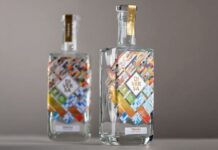Packaging design evolves with time. With time the technology gets more sophisticated. The market thrives on offering choice — by design. In this regular feature, we take a close look at everything that happens between developing a new product and designing its packaging; everything that deals with the current retail scenario, manufacturing constraints, filling line issues, transportation logistics, cost constraints and more.
Towards zero degree of packaging
“Zero Degree of Packaging”: It is a fascinating expression I came across recently in an Italian packaging design magazine article. The expression seems to perfectly capture everything that packaging design is – and isn’t. Obviously, packaging is essential for any product and that is why it is there. But, by its form and function, that packaging can be made to blend into the personality of the product itself such that it becomes non-intrusive, invisible, minimalist and to the “zero degree”.
The Italian magazine article goes on to refer to Prada’s recently launched line of cosmetics, as “streamlined, essential and futuristic looking packs that seem to have appeared on the market as if from another planet.” It talks of the packs perfectly fitting into the overall context of the brand – referring to its flagship store where the “aesthetics are the latest trends in design, the glacial style of the Apple iBook , or contemporary vision of science fiction, where white colour dominates and fixtures are asymmetric and organic in shape.” In this context, the packs that reach the customers hands appear to be proof of a voyage to another dimension.
New age packaging
It is often said, the heart and soul of a product’s existence is shaped heavily by its pack design. The pack is the best means of evoking feelings of lifestyle, stimulating desire, transmitting sensations and communicating “value”. Design and appearance are the most valuable and effective means of contact between the brand and its consumer. In the current “new age” of packaging, old boxy, engineered shapes are giving way to asymmetric, organic forms designed to fit human forms and lives better. The 2D identity of a brand is extended to manifest and reinforce itself as a unique form in 3D.
Converting standard containers to unique designs requires somewhat more than just the Brand Manager’s desire and the pack designer’s artistry. Behind all the change visible in today’s “new age” packs is the role of modern computer based design software and manufacturing techniques. This is the technology that is revolutionising the processes and making it possible to visualise and produce complex designs quicker and to a higher degree of accuracy than previously possible.
Smart modeling design workflow
Thanks to increasingly powerful 3D design software, the guesswork between looking at a 2D piece of artwork to converting it to 3D has become a good deal more accurate. People have been attempting to describe the three-dimensional world with two-dimensional tools for centuries. In the words of a representative of the popular 3D software Solidworks, “Nothing much changed until the 1960s with the introduction of electronic drafting. It was easier, but it was inherently 2D and fairly tedious. Then, in the 1980s, 3D modelling systems became available. Intelligence was introduced into modelling.”
Cadcam, or Computer Aided Design, developed through the 1960’s and 70’s, specifically as a highly complex surface modelling tool that took over 6 months to master. Solid Modelling technology developed in the ‘80’s and ‘90’s as a simpler, though not as flexible, improvement. Later, a hybrid “total modelling” approach developed, making it possible to combine 3D structures with 2D details like logos, textures and other decorations. This also allows modifications of designs to be much quicker and easier, making it possible to create a greater selection of alternatives when presenting proposals for new designs. The process of modifying designs on-screen, with minor modifications in styling is also called “morphing” and is a useful tool in design management decision making. The software allows every concept variant to be visualised accurately on-screen and changes can be made easily. Cost of manufacturing is reduced when the whole design process speeds up and accuracy of dimensioning and “fits” can be ensured.
The technology gives packaging manufacturers accurate, consistent designs that don’t need to be tried out physically. The extra cost of CAD software is thus easily absorbed by the savings due to increased efficiency and reduced waste.
These new industrial design tools offer a wealth of features for design management and productivity, for example:
– the ability to produce mathematically correct surfaces.
– varied toolsets that allow for multiple design approaches. Some people may need to work to a strict set of engineering requirements; others may choose a more sculptural approach.
– a well developed connectivity with CAD/CAM standards.
– a host of tools to evaluate volumes and surfaces.
– project management and collaboration tools.
Typical among the vast choice of specialised software on offer for the new packaging design are: AutoCAD 3D, ProE, Solidworks, Delcam, Catia, Rhino, ArtiosCAD, Unigraphics, Lightwave 3D and others.
Packaging – “made to measure”
In my own experience, ProE and AutoCAD 3D are most popular in India for packaging applications. This is due to easy availability of the software and proliferating training courses. This software is not as “sculptural” and requires accurate dimensional inputs for the desired shape to be realised. Calculation of Over Flow Capacity in this software also poses difficulties. However, there is increasing awareness of the availability of specialised packaging design software. The high costs of acquiring licences and absorbing skills remain an obstacle especially when clients are unwilling to appreciate such costs!
Finally, thanks to the specialised software and the great versatility of plastics, and the vast range of combinations and polymers available, it is becoming possible to realise the dream of “zero degree of packaging”; in fact, truly a “made to measure” pack.
Case study
Bottle Design with Easy Grip – “Easy-Off Bang Power Cleaner” Easy-Off Bang is a popular home hygiene liquid product in a characteristic triangular, flat, bright purple bottle with a nozzle closure. The client wanted to develop a Degreaser variant reminiscent of the original characteristic shape, with the addition of an “easy grip” feature to allow easy dispensing of the product by a standard spray nozzle.
The design process moved from initial sketches rendered in 2D software, to 3D solid modelling in ProE. Once the shape was chosen, the bottle mock-up was carved manually in acrylic, and painted and labeled in desired colours for “live evaluation”.
The original 3D design data were later used directly to develop the blow-moulding tools for the trials and final production of the packs.
In this way, the entire design process was speedily focused towards evaluating just one “live” mock-up after having visualised several possible concepts virtually, on-screen.












